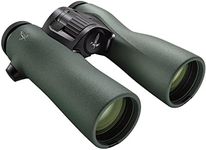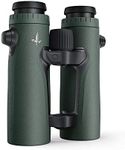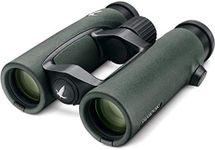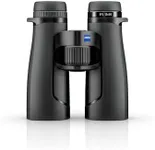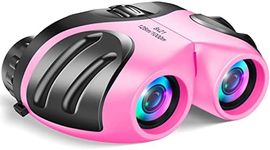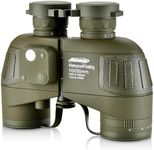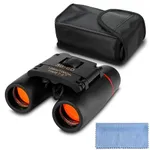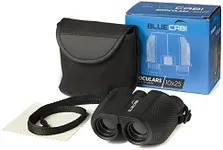Buying Guide for the Best Long Distance Binoculars
Choosing the right long-distance binoculars can greatly enhance your viewing experience, whether you're bird watching, stargazing, or enjoying scenic views. The key is to understand the various specifications and how they align with your specific needs. Here are the main specs to consider when selecting long-distance binoculars and how to navigate them.MagnificationMagnification indicates how many times closer an object will appear compared to the naked eye. For long-distance binoculars, higher magnification (e.g., 10x, 12x, or more) is generally preferred as it allows you to see distant objects in greater detail. However, higher magnification can also make the image shakier and reduce the field of view. If you need binoculars for steady viewing, consider a tripod or image stabilization features.
Objective Lens DiameterThe objective lens diameter, measured in millimeters, determines how much light the binoculars can gather. Larger diameters (e.g., 50mm, 70mm) are better for low-light conditions and provide brighter images, which is crucial for long-distance viewing. However, larger lenses also make the binoculars heavier and bulkier. Choose a size that balances brightness with portability based on your usage.
Field of ViewField of view (FOV) is the width of the area you can see through the binoculars, usually measured in feet at 1,000 yards or meters at 1,000 meters. A wider FOV is beneficial for tracking moving objects and scanning large areas. For long-distance binoculars, a narrower FOV is common due to higher magnification, but ensure it is wide enough to comfortably locate and follow your subject.
Lens CoatingLens coating improves light transmission and reduces glare, enhancing image clarity and brightness. Coatings can range from single-layer to fully multi-coated lenses. For long-distance binoculars, fully multi-coated lenses are ideal as they provide the best image quality. Consider your viewing conditions and opt for the best coating you can afford to ensure clear, sharp images.
Prism TypeBinoculars use prisms to correct the orientation of the image. The two main types are Porro prisms and roof prisms. Porro prisms generally offer better image quality and depth perception at a lower cost but are bulkier. Roof prisms are more compact and durable but can be more expensive. For long-distance viewing, both types can be suitable, so choose based on your preference for size and handling.
Eye ReliefEye relief is the distance from the eyepiece to your eye where you can see the full field of view. This is especially important for eyeglass wearers. Longer eye relief (e.g., 15mm or more) allows for more comfortable viewing without straining your eyes. If you wear glasses, look for binoculars with adjustable eye cups and sufficient eye relief to ensure a comfortable experience.
Weight and SizeThe weight and size of binoculars can affect how long you can comfortably use them. Heavier binoculars can be tiring to hold for extended periods, while more compact models are easier to carry but may compromise on some features. Consider how you plan to use the binoculars and choose a model that balances performance with comfort and portability.
Waterproofing and Fog ProofingWaterproof and fog-proof binoculars are essential for outdoor use, especially in varying weather conditions. These features protect the internal components from moisture and prevent fogging, ensuring clear views in all environments. If you plan to use your binoculars in humid, rainy, or cold conditions, look for models with these protective features to ensure durability and reliability.
